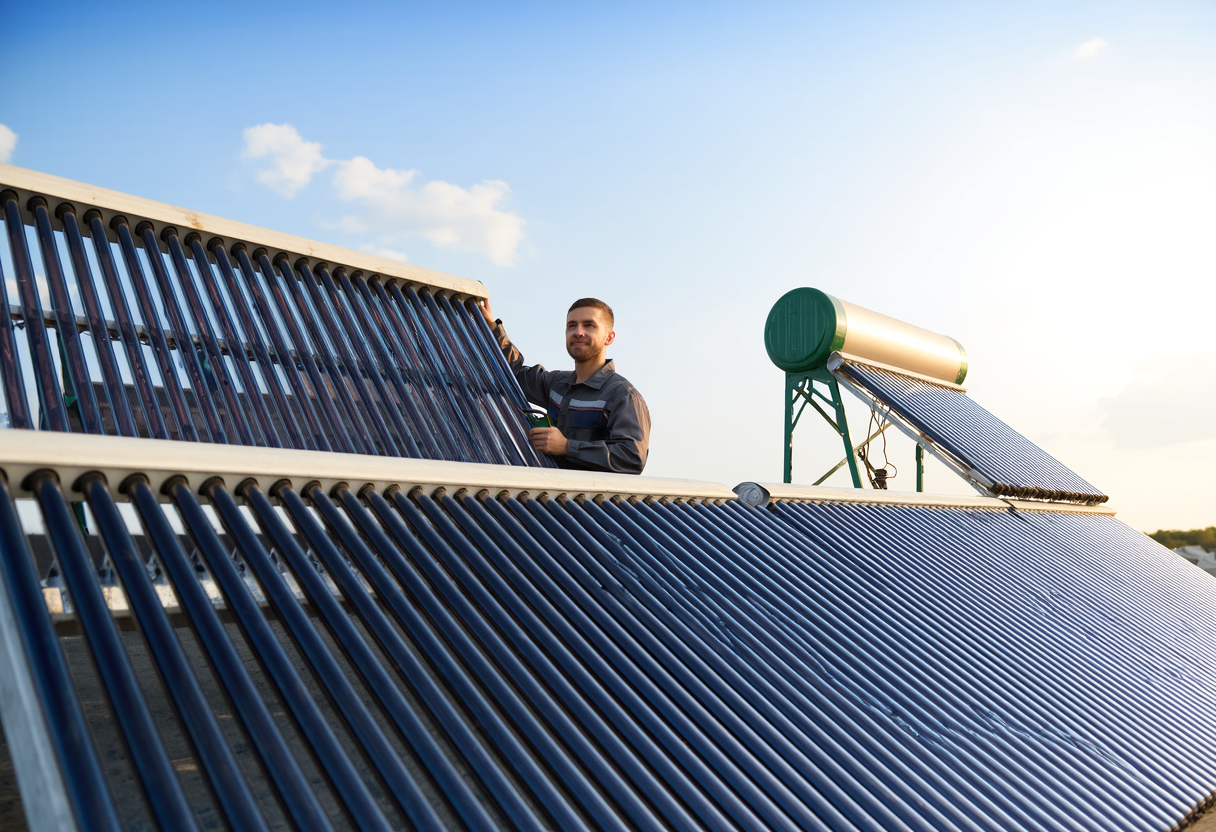Maximizing Efficiency with Solar Thermal Collectors: Tips and Insights
Maximizing efficiency with solar thermal collectors can lead to significant energy savings and sustainability benefits. This article provides insights on how to optimize the performance of these systems, from installation choices to maintenance tips. Readers will learn essential strategies to enhance their solar thermal systems' effectiveness. Dive into our expert insights and discover how to effectively utilize solar thermal technology for a greener future.
Introduction to Solar Thermal Collectors
Solar thermal collectors are essential devices that capture and convert solar energy into usable heat. Their successful implementation can yield substantial benefits in terms of cost savings and environmental impact. Understanding the different types of solar thermal collectors available is the first step in maximizing their efficiency. The most common types include flat-plate collectors, evacuated tube collectors, and concentrated solar collectors, each with specific characteristics suited to different applications and climates. By selecting the appropriate type based on regional conditions, users can significantly enhance the effectiveness of their solar thermal systems.
Optimizing the installation process is critical to ensuring that solar thermal collectors operate at peak efficiency. Proper orientation and tilt angles are essential factors that maximize sunlight exposure throughout the day. Installers must consider shading from nearby trees or structures that could limit exposure, diminishing the efficiency of solar thermal systems. It's also vital to assess the placement of collectors in relation to storage tanks and piping arrangements to ensure that heat transfer is as efficient as possible. Conducting a comprehensive site assessment before installation can prevent common pitfalls and enhance system performance.
Key Maintenance Strategies for Solar Thermal Collectors
Maintenance is another key aspect of maximizing the effectiveness of solar thermal collectors. Regular inspections and routine upkeep can help identify any issues that may cause inefficiencies. Key maintenance tasks include checking fluid levels, ensuring there are no leaks, and cleaning the collector surfaces to eliminate dust and debris that may hinder performance. Furthermore, timely servicing of components such as pumps and controllers ensures optimal operation. Users should consider establishing a maintenance schedule to keep their solar thermal collectors in prime condition throughout their operational life.
Another effective way to enhance solar thermal efficiency is by incorporating advanced technology such as smart thermostats and automated control systems. These technologies allow users to monitor usage patterns and optimize their energy consumption. Additionally, integrating solar thermal collectors with other renewable energy systems such as solar photovoltaics or heat pumps can create a synergistic effect, further boosting overall efficiency. The combination of these technologies leads to better energy management, ensuring that users maximize their return on investment. As energy trends evolve, embracing innovative solutions for solar thermal systems will be crucial.
Future Directions for Solar Thermal Collectors
Looking towards the future, the development of new materials and technologies promises to improve the efficiency and effectiveness of solar thermal collectors. Innovations like phase change materials and advanced thermal storage solutions could significantly advance the capabilities of these systems. As manufacturers continue to refine their designs and increase performance, the appeal of solar thermal collectors is poised to grow. Communities focusing on sustainable practices and utilizing solar thermal collectors will play a crucial role in the transition towards renewable energy. The potential for the global solar thermal market remains significant, reflecting a broader commitment to clean energy solutions.
Conclusion: Embracing the Potential of Solar Thermal Collectors
In conclusion, maximizing the efficiency of solar thermal collectors involves thoughtful installation, ongoing maintenance, and adaptability to emerging technologies. As society strives towards a sustainable future, these systems offer a viable pathway towards reducing energy costs and minimizing environmental impact. By leveraging the tips and insights discussed in this article, users can achieve optimal performance from their solar thermal collectors, positioning themselves at the forefront of the renewable energy movement. A collective effort in adopting sustainable energy practices will foster a healthier planet for future generations.
